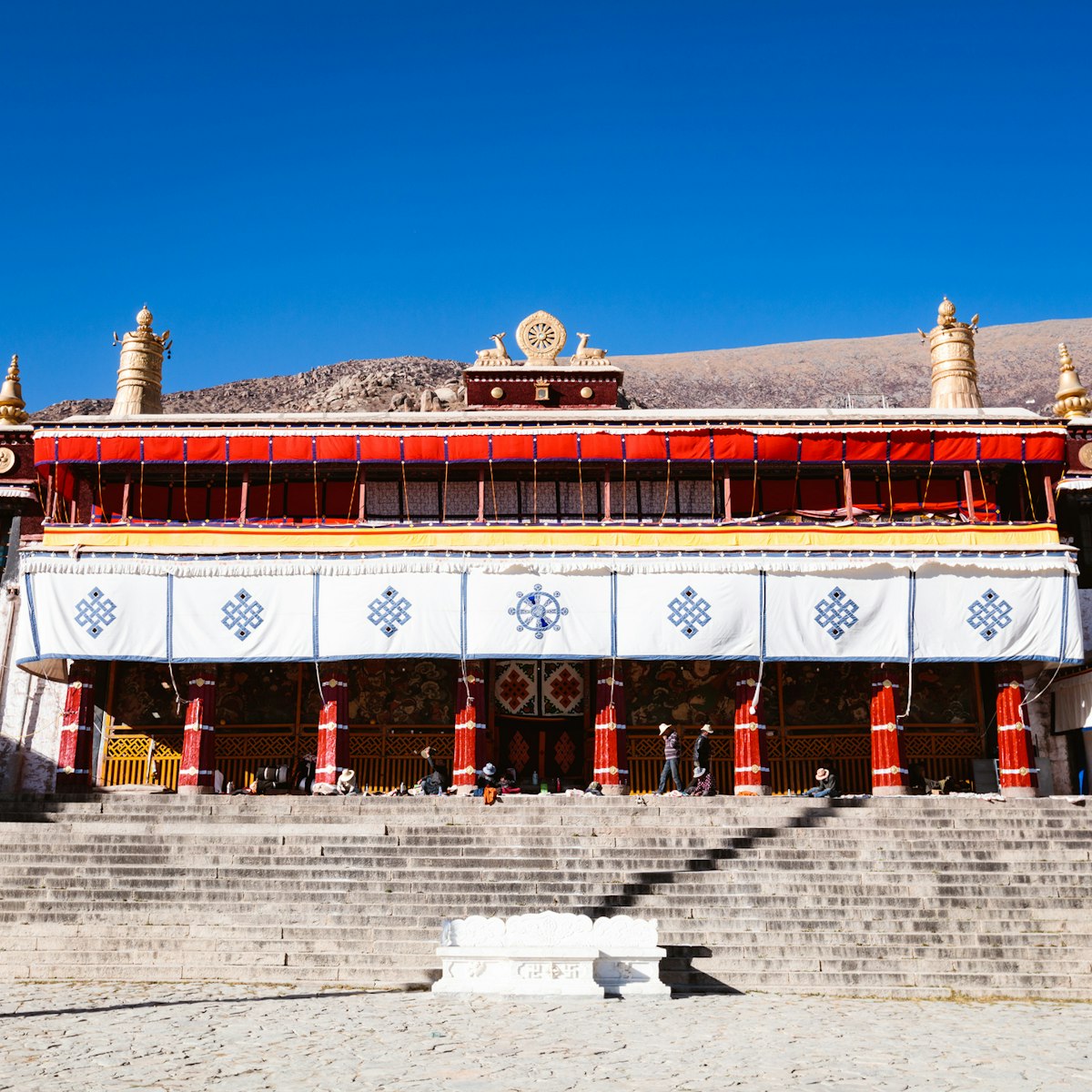This is the largest of Sera’s colleges, generally accessed from a western side entrance. It has a breathtaking main hall, hung with thangkas and lit by shafts of light from high windows. Several chörtens hold the remains of Sera’s most famous lamas. To the left of the hall is a passage leading, via a chapel dedicated to the Past, Present and Future Buddhas, to the most sacred of Sera Monastery’s chapels, the Chapel of Tamdrin.
Tamdrin (Hayagriva) is a wrathful meditational deity whose name means ‘horse headed’. He is the chief protective deity of Sera, and there is often a long line of shuffling pilgrims waiting to touch their – and especially their children’s – foreheads to his feet in respect. Children get a black mark of butter-lamp soot on their noses as a blessing. Monks sell holy threads, protective amulets and sacred pills here, as well as red slips of inscribed paper called tsenik, which pilgrims buy to burn for the recently deceased and newly born. The ornate brass shrine recalls the temples of the Kathmandu Valley. As you queue up to view the shrine, take a look at the weapons, hats and masks hanging from the ceiling. Join the pilgrims in buying a white khatag and throwing it up onto the three Buddha statues.
The first chapel to the rear of the hall is devoted to a lovely statue of Sakyamuni, seated below a fine canopy of curling dragons and a ceiling mandala. Pilgrims lean on the steps to the right to touch his left leg. The next two chapels are dedicated to Tsongkhapa, with Sakyamuni and Öpagme (Amitabha), and to Jampelyang, flanked by Jampa and another Jampelyang. From here head to the upstairs chapels, the second of which has a fine embroidered thangka of the fourth Panchen Lama.
To the northeast of Sera Je is Sera’s debating courtyard. Photos are allowed on mobile phones but not actual cameras.



